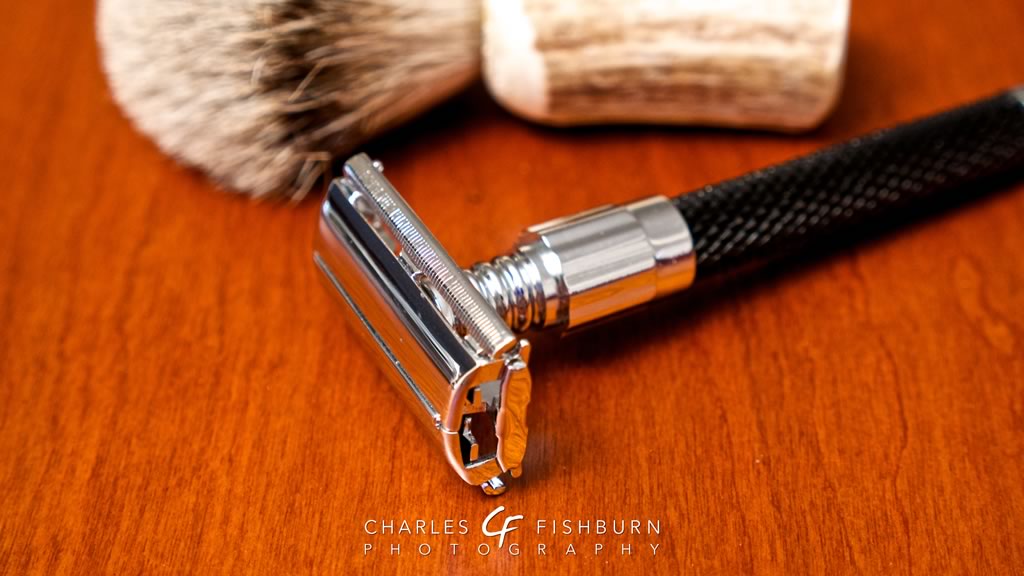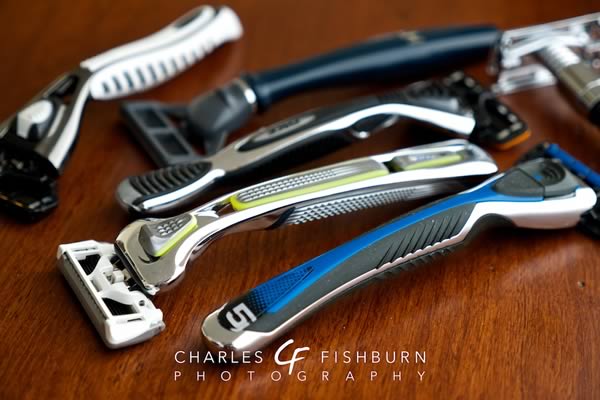
The Pragmatic Shave, Part 1: Introduction
Like many people, I have gone through a variety of razors in my shaving life. I’ve used a few different electric razors over the years, but I’ve used many more varieties of manual razors. Over the course of 25+ years, I’ve tried the old Gillette Trac II, the Gillette Sensor, the Gillette Mach III, the Schick Quattro and eventually the Gillette Fusion ProGlide. I actually used an old school black-handled Gillette Super Speed safety razor (from 1968) for a period of time before landing, admittedly after watching several episodes of “Queer Eye for the Straight Guy” and searching the internet on the topic of shaving, at the five-blade Fusion razor.
It’s very easy to find on the web plenty of discussion forums, video tutorials, and more on shaving. Yes, I said “video tutorials”. I thought shaving was an essentially straight-forward process. But in my online research, I was surprised to find that despite the seemingly ludicrous blade-count and “blade tech” war running in mainstream media, an increasingly large contingent of traditionalists (for lack of a better term) had gone technologically backwards to use either the elegant yet precarious single-edged straight razor or the more modern by comparison but still retro double-edged safety razor. And apparently there actually is a slight learning curve when switching for the first time from a modern multi-blade cartridge razor to a double-edged safety razor; there is an even steeper curve when switching to the straight razor.

From left to right: Gillette Mach III, Dollar Shave Club 4X, Gillette Fusion Power, Harry’s Truman, 800Razors, Dorco Pace 6, and Dorco Pace 6 Plus
So: are five blades better than one, or is one blade better than five? It almost seems like a silly question. A shave is a shave is a shave, isn’t it? Opinions vary, so it depends on who you’re talking to. Despite any marketing hype pitched by manufacturers of razors, shave cream, brushes, aftershave and other shave essentials, I think of the act of shaving as more tedium than indulgence. Regardless, at the end of the activity I want a smooth shave without any nicks, and without my face on fire; and to some extent, I don’t care how many blades I have use to get that shave. As I mentioned earlier, I did use an old safety razor for a while, along with a badger-hair shaving brush. And if I’m honest, I did find a measure of luxuriousness in that ritual of using a brush to work up the lather from a shaving cream that didn’t originate from an aerosol can. But still, that was more novelty than indulgence.
The safety razor experiment was interesting though for a couple of reasons. First, although the process took more time, I managed to stay mostly nick-free and get a very close shave with a single blade. Second, and a bit more germane to my intended direction for this series of entries, I was using very inexpensive double edge razor blades rather than the most recent —and relatively pricey—multi-blade refill cartridge from one of the “Big Shave” companies.
In the realm of cartridge-based razor systems, I admit that the upgrades in razor blade count and technology have been nice in terms of getting a closer shave. But the downside is that the blades become increasingly more expensive. That increased expense leads to the natural question of whether or not the benefits of the shave offset the higher price tag. Is the expensive five-blade shave really worth more than the less expensive single-blade shave? Or is the sweet spot somewhere in the middle?
After doing a little browsing around on the web, here’s a quick breakdown of current blade price averages (roughly):
| Safety Razor blades | $0.17 each |
| Gillette Trac II refills | $1.50 each |
| Gillette Mach 3 refills | $2.26 each |
| Schick Quattro refills | $2.74 each |
| Gillette Fusion refills | $3.62 each |
Looking at just the cartridge-based razors, if a guy used one cartridge a month, the expense could vary from around $20 to around $40 per year. If a guy used one cartridge a week, that expense jumps from around $80 to over $180.
Thanks to some targeted ads on Twitter and Facebook, I heard about a couple new kids on the shaving block: Harry’s and Dollar Shave Club. While comparing prices on Amazon, another targeted ad introduced me to Dorco USA. And just when I thought I had heard of all of the players, a television ad brought 800Razors.com to my attention. While their approaches to branding and marketing differ, they all aim to get guys (mostly) to start buying less expensive razors from them instead of paying the premium prices charged by the bigger names and the brick-and-mortar sellers.
You might be inclined to think that the reason they can charge less is because they sell inferior-quality blades. But that might not be the case. None of them have to bother with paying for big celebrity endorsements. To my knowledge, none of them have their names attached to a major league sports stadium. And although Dollar Shave Club’s ad (which went viral) was well written and well put together, I have yet to see what I would consider a high production value television ad during prime time on a major network. I think I saw the 800Razors commercial after 10 PM on the Science channel, and I’ve only seen it once. So I imagine that they’re not concerned with spending tons of money on a high-end advertising team or firm. It seems they’re getting plenty word-of-mouth recognition on social media, each with thousands of “Likes” and followers. My final thought about their money-saving options is that they probably don’t have big corporate management teams and the accompanying salaries.
So are the “cheap” guys worth it? Your mileage may vary, but I figured I’d see how they compare to my Gillette experience.
Click here to continue to “The Pragmatic Shave, Part 2: Harry’s”

